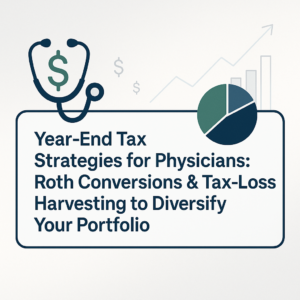In today’s ever-evolving financial landscape, strategic investment decisions carry great weight in building wealth and securing a stable financial future. As markets fluctuate, it’s crucial to not only optimize your investment portfolio but also ensure that it remains balanced through regular rebalancing efforts. This comprehensive guide is crafted to empower you with the knowledge and strategies needed to maximize returns and manage risks effectively.
The Fundamentals of Portfolio Optimization
Optimizing your investment portfolio is a continual process that involves several key strategies to maximize growth while minimizing unnecessary costs.
Identifying Underperforming Accounts
A foundational step in improving portfolio performance is spotting accounts with high expense ratios. High fees can significantly diminish returns over time, so regularly assess all your accounts. For instance, a modest expense ratio of 0.75% can, over time, meaningfully impact overall gains.
Efficient Cash Utilization
Idle cash is a missed opportunity for financial growth. By allocating cash into low-cost index funds or other effective investing vehicles, you enhance overall returns. This proactive approach not only maximizes your portfolio’s earning potential but also mitigates the risk of holding non-performing assets.
Proper Asset Allocation
Creating a balanced mix of asset classes—such as stocks, bonds, and real estate—is essential for managing risk and optimizing long-term returns. Diversified portfolios are better suited to weather market downturns, reducing the impact of volatility on any single sector.
The Art of Portfolio Rebalancing
Rebalancing your portfolio is a strategy for maintaining your desired asset mix, ensuring that your investments align with your long-term financial goals.
Why Rebalancing Matters
Market movements can skew your portfolio’s allocations, enhancing exposure to unwanted risks. If, for example, stocks outperform other assets, your portfolio might lean more heavily on equities than intended, increasing susceptibility to market volatility. Rebalancing helps mitigate these risks and can enhance returns by realigning allocations to their original targets.
Steps to Rebalance Your Portfolio
- Assess Your Current Portfolio: Conduct a thorough review of all investments, analyzing asset distribution comprehensively across IRAs, 401(k)s, and brokerage accounts.
- Set Your Target Allocation: Utilize financial theories, like modern portfolio theory, to determine ideal asset mixes based on risk tolerance, financial goals, and investment horizons.
- Identify Deviations: Compare current allocations to your targets to identify over- and under-weighted asset classes.
- Make Adjustments: Shift funds by selling over-weighted investments and purchasing under-weighted ones to maintain balance, while considering tax implications of asset sales.
Special Considerations for Healthcare Professionals
With unique financial challenges, healthcare professionals should leverage specialized strategies, such as automated financial tools and regular consultations with financial advisors. Balancing debt repayment with investment growth is also key; prioritizing high-interest debts while still contributing to retirement accounts can yield long-term benefits.
Addressing Significant Holdings
Holding substantial positions in specific stocks can disrupt your portfolio’s balance. For instance, having a significant stake in a company like Nvidia could skew your allocation heavily toward tech stocks. To mitigate this, consider reducing similar sector holdings in other parts of your portfolio to maintain diversified exposure.
Choosing the Right Investments
Diversified products like Indexed ETFs offer a solid foundation due to their broad market exposure and typically lower costs. Understanding investment correlations and selecting funds aligning with your financial goals can contribute to a more robust portfolio.
The Importance of Regular Reviews and Professional Guidance
Regular reviews, at least annually or during significant life events, keep your portfolio aligned with your financial goals. Professional financial advisors, particularly those with CFP® or CFA credentials, can provide tailored advice. These experts help navigate complex decisions, ensuring your investments are optimized and balanced.
Conclusion
In conclusion, optimizing and rebalancing your portfolio are essential components of a successful investment strategy. Regular assessments, strategic adjustments, and professional advice can significantly enhance your portfolio’s performance, ensuring financial stability and growth. Maximize your investment returns by starting with the outlined strategies and adapting them to your personal financial journey. Take control of your financial future today, and let these insights guide you toward long-term prosperity.






